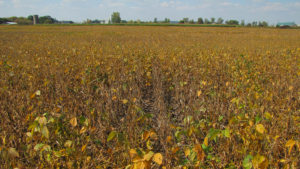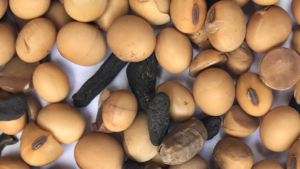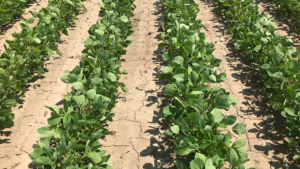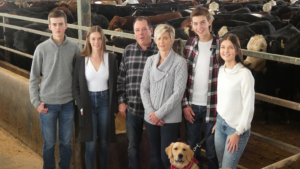White mould control
AGRONOMIC INFORMATION FROM ONTARIO'S CROP SPECIALISTS

AN OLD SAYING goes, “A little white mould is the sign of a good crop.” This makes perfect sense because white mould flourishes under moist summer conditions. Adequate rain in July and especially August also leads to lush soybean growth, leading to high yields.

However, a small amount of white mould can quickly increase to a devastating outbreak under the right conditions for the disease. Take note of which fields had white mould pressure this year to manage the disease in the future. White mould survives in the soil in overwintering bodies called sclerotia. They are roughly the same size as soybean seed (see photo to left).


It is well understood that white mould thrives under cool, wet conditions. That’s why lowering plant populations and increasing row widths can be important strategies to dry out the canopy to reduce white mould pressure. If plants lodge, the field is particularly susceptible to white mould. Careful variety selection and two passes of a foliar fungicide will go a long way to help manage the disease. Another factor that seems to have been largely forgotten over the last few years is that tillage leads to more white mould compared to no-till. In fact, the initial widespread adoption of no-till soybeans was partly due to the observed reduction in white mould pressure in no-till systems. In no-till, the sclerotia are left on the soil surface to die. No-till does not eliminate the problem, but it can help reduce the disease. •



















